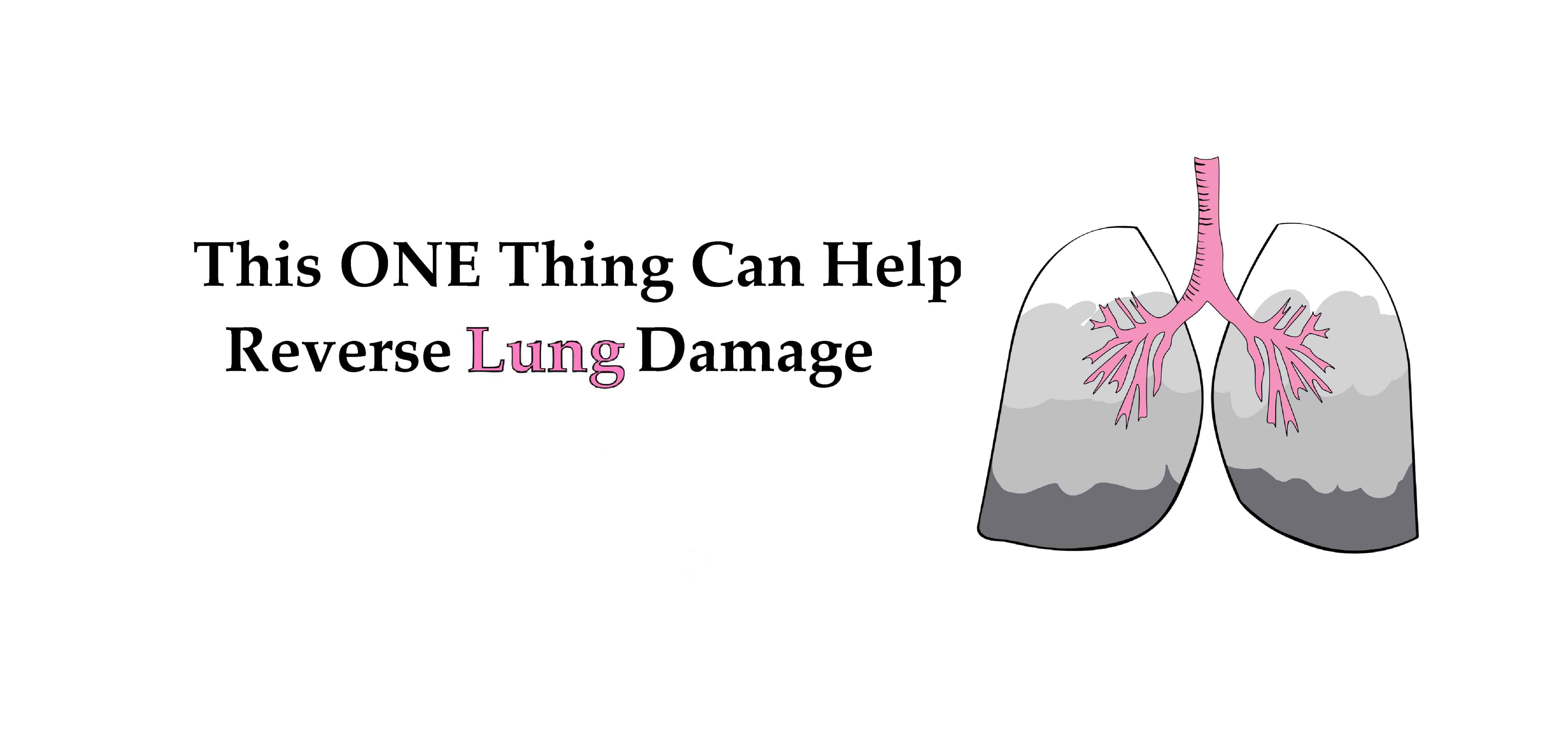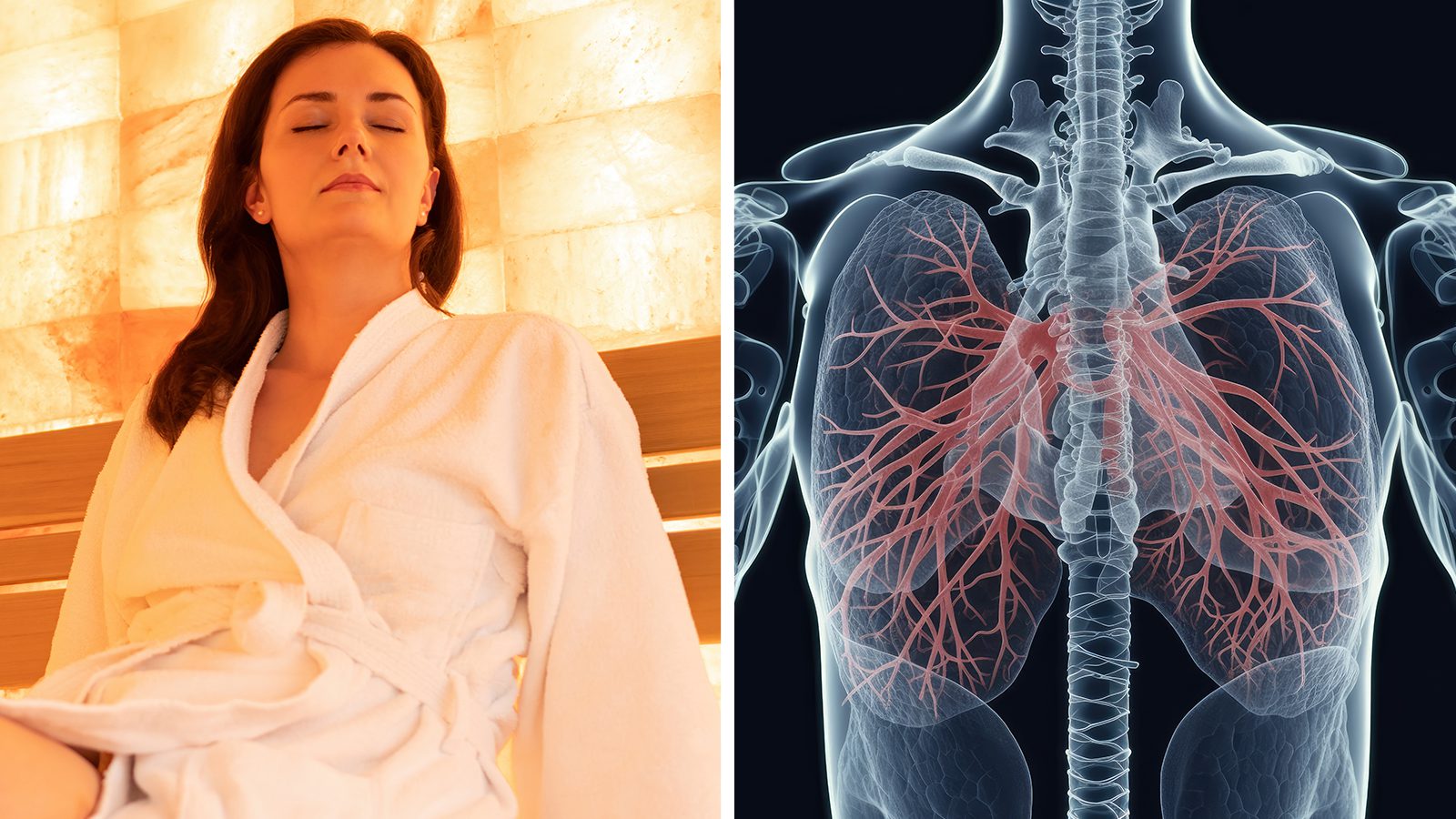You take over 23,000 breaths per day. And you should count every one of them as a blessing if you are concerned about reversing lung damage. Your breath must carry oxygen to help your metabolism and other bodily functions work effectively.
If you aren’t or weren’t a smoker, an asthmatic, or someone with a lung problem already diagnosed, you might not believe you have lung damage. You might not have anything to worry about. But you might also be ignoring warning signs of lung damage.
The American Lung Association says, ‘ Cigarette smoke can narrow air passages and make breathing more difficult. It causes chronic inflammation, or swelling in the lung, which can lead to chronic bronchitis. Over time cigarette smoke destroys lung tissue, and may trigger changes that grow into cancer. If you smoke, it’s never too late to benefit from quitting.’
Exposure to pollutants like ‘Secondhand smoke, outdoor air pollution, chemicals in the home and workplace, and radon’ can all lead to lung damage that you may need to work to heal and reverse. If you are concerned about home pollutants, many houseplants can help purify your air. See the link to our article below for more information.
Outdoor pollutants like ozone, dust and particulates, nitrogen dioxide, sulfur dioxide, carbon monoxide and 200 other air pollutants can really take a toll on your lungs’ health. Get smart about your local air quality rather than buying personal air filtration systems and walking around in a bubble of filtered air. Watch your local weather for warning about high pollution days and avoid outdoor exercise on these days.
Symptoms of Lung Damage
The American Lung Association, a premier authority in respiratory health, highlights some early symptoms that may suggest an underlying lung condition. This information is critical as it could be the first step in detecting and treating lung diseases such as Chronic Obstructive Pulmonary Disease (COPD), asthma, and lung cancer.
If you have previously battled conditions such as COPD, Asthma, Pneumonia, or Influenza, it’s essential to know that these diseases could have left some damage to your lungs. Don’t be alarmed by these symptoms. Instead, they should warn you to be vigilant about your respiratory health. Remember, early detection and treatment is key in managing these conditions.
Now, let’s jump into the specific symptoms that may indicate lung disease. Understanding these signs could differentiate between identifying a potential problem early or missing it until it’s more advanced.

Shortness of breath may signal lung damage
Shortness of breath is one such symptom. If you find yourself out of breath, even after doing simple tasks that you used to handle easily, it could be a signal that your lungs are not operating at their full capacity.
Closely related to this is the experience of having trouble catching your breath after mild exertion. Whether you’re climbing a flight of stairs or simply doing some light household chores, if you’re struggling to regain your breath afterwards, it’s a sign you should not ignore.
Wheezing may indicate lung damage
Wheezing is another common sign of possible lung disease. If your breaths also have awhistling or hissing sound, it may indicate that your airway constriction or inflammmation. That’s a common characteristic of diseases like asthma or COPD.
A persistent cough may mean trouble with your lungs
Persistent coughing is a symptom that some overlook. That’s because it’s commonly associated with less serious ailments such as the common cold. However, a continuous cough, especially one that doesn’t seem to improve over time, may suggest an underlying lung condition.
Overproducing mucus may be a sign of unhealthy lungs
Overproduction of mucus is another warning sign. While it’s normal for your body to produce mucus to trap and eliminate foreign particles, an excessive amount could be your body’s way of telling you that something is not quite right in your respiratory tract.
Coughing up blood means something is wrong with your lungs
Lastly, and perhaps most critically, coughing up blood should never be ignored. This is a serious symptom that warrants immediate medical attention. Although there are several possible causes, one of them could be lung disease, including a severe condition like lung cancer.
Remember, these symptoms are not a definitive diagnosis but potential warning signs that should prompt you to seek medical advice. Listening to your body and taking these symptoms seriously can lead to early detection and treatment, thereby improving the prognosis of these respiratory conditions. Your health and well-being are always worth the attention and care, so please, don’t delay if you notice any of these symptoms.
This ONE Thing Can Help Reverse Lung Damage
Vitamin A or beta carotene can help reverse lung damage. However, this may be only true for men who are nonsmokers. In a study of the use of beta carotene and retinol supplements to reverse lung cancer and cardiovascular disease, women and smokers had an increased risk with the use of vitamin A supplements, even at a 6 year follow up.
The authors of one study say that ‘Increasing evidence suggests that beta-carotene, retinol (vitamin A), and alpha-tocopheral (vitamin E) may have important protective effects in the lung.’ Research into the mechanisms of how vitamin A help with reversing lung tissue is still ongoing.
Other Things That Can Help Reverse Lung Damage
- Quitting smoking: Not only can stopping smoking stop further lung damage. But the lung heals itself as you reverse the damage!
- Humid air: Living in a desert climate means living in a dusty area. Dust particulates suspend in the air for you to breathe. That causes allergic reactions and irritations in lungs. So try a humidifier in your home to reduce the dust in the air.
- Salt air: Breathing salt air is known as halotherapy or speleotherapy. If you live near the beach, you already get this benefit. You can use a salt crystal lamp or saltwater aerosol at home. Healthyguidance.org says that “Salt water aerosols have been found to be effective in treating cystic fibrosis and at 3% have been shown to be effective in treating infants with acute viral bronchitis.”
- Eucalyptus: That vapor-rub feeling of inhaling a big whiff of eucalyptus is refreshing and feels cleansing.
- Breathing exercises: You can strengthen your lung capacity by using breathing exercises.
- Get checked: See a medical practitioner to check for esophagus, sinus, or other issues
- Houseplants: Read about how houseplants help purify your air at home.
For your next exotic vacation, look into a visit to a salt cave, like the ones in Moldavia and Cacica, Romania. Salt caves have been used therapeutically for lung health for centuries or longer. The air of a salt cave is humid and saturated with salt. Breathing this therapeutic salt air is beneficial for lung heath and may help reverse lung damage.
A recent Wall Street Journal article says salt rooms have been popping up in cities such as New York, Orlando, Naples, Fla., Boulder, Colo., Chicago and Los Angeles. While most of us associate salt air with the beach, from a medical standpoint, the experience mimics salt caves. These facilities are a long-time therapeutic in Eastern Europe. Salt room owners say salt can help skin conditions such as psoriasis and eczema and a range of respiratory ailments, including colds, asthma, allergies and bronchitis.’


















